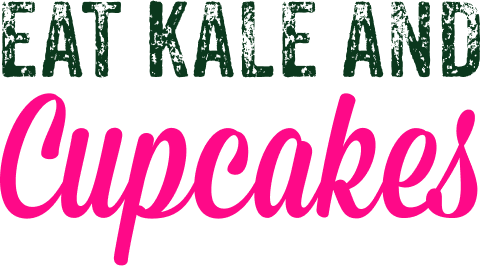Eating Disorders in the LGBTQ+ Community: Challenges and Support Strategies

By Reva Schlanger MS, RD, CDN
Contrary to previous thought, eating disorders are not unique to straight, cisgender women. They cut across all social categories, including sexual orientation and gender identity. LGBTQ+ identified folks experience unique stressors that may contribute to the development of an eating disorder. While there is still much research to be done on the relationships between sexuality, gender identity, body image, and eating disorders, we know that eating disorders disproportionately impact some parts of the LGBTQ+ community. LGBTQ+ people face unique challenges that may put them at greater risk of developing an eating disorder. Research shows that, beginning as early as 12 years old, gay, lesbian, and bisexual teens may be at higher risk of binge-eating and purging than heterosexual peers.
Recent research has come out focusing on the LGBTQ+ community and its high prevalence rates of eating disorders. In fact, research suggests that some LGBTQ+ community members experience eating disorders at even higher rates than their straight and cisgender counterparts.
- In one study, 54% of LGBTQ+ adolescents and young adults surveyed indicated that they had a diagnosed eating disorder, and an additional 21% suspected that they had an eating disorder.1
- Men who identify as gay are thought to represent 5 percent of the total male population, but among males who have eating disorders, 42 percent identify as gay.2
- People who identify as gay, lesbian, bisexual, or “mostly heterosexual” experience elevated rates of binge eating and purging as compared to their heterosexual peers.3
Like eating disorders in other populations, eating disorders in the LGBTQ+ community are complex and multifactorial. Sexual or gender identity alone does not predict who will develop one, as other physiological, social, and biological factors also play a big part. Experiences related to sexual orientation and gender identity can, however, contribute to the development or maintenance of an eating disorder.
Factors that may increase the likelihood of an eating disorder in a susceptible LGBTQ person include:
- Discrimination, harassment, and bullying related to sexual orientation or gender identity.
- Anxiety and fear of rejection or experience of rejections by friends, family, and co-workers
- Internalized homophobia, transphobia, or misogyny.
- Gender dysphoria experienced by trans and/or non-binary individuals
- Inability to meet body image ideals within some LGBTQ+ cultural contexts
- Experiences of violence and post-traumatic stress disorder (PTSD), which research shows sharply increases vulnerability to an eating disorder
LGBTQ+ people, in addition to experiencing unique contributing factors, may also face challenges for accessing treatment and support. Common barriers may include a lack of culturally competent treatment, which addresses the complexity of sexuality and gender identity issues, lack of support from family and friends, and insufficient eating disorders education among LGBTQ+ resource providers who are in a position to detect and intervene. The emergence of LGBTQ+ youth drop-in centers, gay-straight alliances, LGBTQ+ community centers, and LGBTQ+ healthcare resources have created more safe spaces to access support and mental health care. However, many LGBTQ+ people remain isolated in communities that do not offer such services/programs.
Support is key to recovery for people of all gender and sexual identities. True support means caring for the whole person instead of just their illness. When supporting LGBTQ+ people with eating disorders, it is vital to affirm their gender and sexual identities and to recognize how these identities intersect with the experience of illness and recovery.
Here are some strategies to provide support that is safe, inclusive, and affirming for LGBTQ+ community members with eating disorders.
1. Center LGBTQ+ voices and experiences.
Start by simply listening to LGBTQ+ people about their relationship with food and their bodies. Remember that each person is the expert of their experience, and any support offered should respect their individuality and guidance on what is and is not helpful.
Some practical tips for actively listening and learning include:
- Create a safe space for people to share what they need, making it known that you will listen with confidentiality and without judgment.
- Ask how you can help by using questions like: What can I do? Would you like to research LGBTQ+-friendly treatment options together? Would it be helpful to share a meal? What isn’t helpful?
- Read and listen to the experiences of people in the LGBTQ+ community, understanding that there is no singular story.
2. Affirm each person’s identity through inclusive language.
Adopt language that affirms all gender and sexual identities.
- Introduce yourself with your name and pronouns and ask others for theirs.
- Practice using gender-neutral terms (e.g., “everyone”) in place of gendered ones (“men and women”).
- Create intake forms that don’t assume sexual or gender identity.
3. Acknowledge the intersection of eating disorders and LGBTQ+ identities.
Eating disorders can affect the LGBTQ+ community in unique ways. Recognize that special factors may play a role in the development and maintenance of these illnesses in this population, including:
- Eating disorders being overlooked or dismissed across the LGBTQ+ community because they do not fit the stereotype.
- Discordance between body and gender identity among trans and/or non-binary people that can trigger disordered behaviors to improve body dissatisfaction or distress
- An elevated drive for muscularity among gay men that can introduce or exacerbate eating disorder symptoms
4. Appreciate that recovery is not one size fits all.
Eating disorder recovery looks different for everyone, and several mainstream recovery messages may be particularly out of touch with the experiences and needs of LGBTQIA+ people.
When providing messages of support, be wary of:
- Messages championing total body positivity (e.g., “Your body is perfect the way it is!” “Love the skin you’re in!”), which can be invalidating for those experiencing gender dysphoria.
- Messages celebrating the return of menses, which can be dysphoric for trans and non-binary individuals.
- Heteronormative and patriarchal messages meant as motivation in recovery (e.g., “Guys like women with curves.”).
5. Support efforts toward greater inclusion and diversity.
LGBTQ+ individuals face unique barriers to eating disorder treatment and ensuring that the community has access to care is ongoing work.
Support efforts toward greater inclusion and diversity in the field, including:
- Striving to make all eating disorder programs safe and affirming spaces
- Continuing education on the unique needs and experiences of LGBTQ+ people with eating disorders
- Ensuring LGBTQ+ people are included in research that informs social and healthcare policies
Much like recovery itself, supporting LGBTQ+ people with eating disorders is an active process that requires compassion and sensitivity. To be helpful is to be inclusive, non-judgmental, and culturally competent. Care must be tailored to the needs of each person, reflecting an understanding of and respect for each person’s identity and unique life experiences. With further education and understanding, we can help provide support to the LGBTQ+ community as everyone deserves full recovery from an eating disorder.
References:
- Over half of LGBTQ youth in New National Survey have been diagnosed with eating disorders. National Eating Disorders Association. https://www.nationaleatingdisorders.org/over-half-lgbtq-youth-new-national-survey-have-been-diagnosed-eating-disorders. Published October 10, 2019. Accessed August 12, 2022.
- Statistics & Research on Eating Disorders. National Eating Disorders Association. https://www.nationaleatingdisorders.org/statistics-research-eating-disorders. Published July 14, 2021. Accessed August 12, 2022.
- Austin SB, Ziyadeh NJ, Corliss HL, et al. Sexual orientation disparities in purging and binge eating from early to late adolescence. Journal of Adolescent Health. 2009;45(3):238-245. doi:10.1016/j.jadohealth.2009.02.001
- Parker LL, Harriger JA. Eating disorders and disordered eating behaviors in the LGBT population: A review of the literature. Journal of Eating Disorders. 2020;8(1). doi:10.1186/s40337-020-00327-y
- Eating disorders in LGBTQ+ populations. National Eating Disorders Association. https://www.nationaleatingdisorders.org/learn/general-information/lgbtq. Published February 21, 2018. Accessed August 14, 2022.







